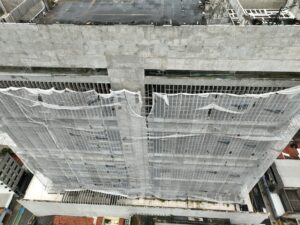China: Framework To Mitigate The Environmental Impact Of Building Materials
Introduction:
Urbanization and population growth have contributed to a tripling of building materials consumption from 2000 to 2017. Building materials have a range of environmental impacts throughout their life cycle, from extraction, processing, and transport of raw materials to building construction, use, and eventual demolition and waste. Mitigation measures that target specific materials or value chain stages may therefore have incremental or even adverse net environmental effects.

In this perspective, we develop a framework for applying life cycle thinking to identify key impacts and corresponding mitigation approaches, inform building design and material selection, and ensure effective treatment and recycling of construction and demolition wastes. Life cycle evaluation can also be used to assess and avoid environmental trade-offs among life cycle stages. Challenges for implementing these life cycle principles include collecting and integrating inventory data for products, managing multiple stakeholders within the construction industry, and monitoring end-of-life impacts; measures for overcoming such challenges are discussed.
Life Cycle Thinking For Building Materials:
The full life cycle stages—value chain or supply chain processes—of building materials include the extraction of raw materials, processing and manufacture of these raw materials, transportation, construction and retrofitting, use and maintenance, demolition and waste management, disposal and circular processing through reuse, recycling, and recovery.
Identify Key Impacts And Mitigation Approaches:
One of the first principles of LCT is to help identify impacts and mitigation approaches for various materials and stages. Each building material life cycle process activity involves energy and resource consumption and pollutant emissions, which vary on both input and output dimensions. Extraction and manufacturing of building material activities result in almost 90% of the life cycle environmental pollutants, not including the treatment process.
Environmental impacts during transportation and construction include nitrogen oxides (NOx) and carbon dioxide (CO2) emissions resulting from fossil fuel consumption. Building waste treatment includes waste plaster and wood, which are key contributors of organic acid in landfills. Incineration of wood, plastic, and paper generates pollutants such as ammonia (NH3), heavy metal ions, and volatile organic compounds (VOCs); each has human and ecological toxicity impacts.
Design And Building Materials Selection:
The second major LCT principle is emphasizing design and building materials selection to reduce environmental burdens. The design process is essential for avoiding or reducing environmental impacts; it also sets the stage for enhancing life cycle sustainability of building materials and building operations. Design and material selection can reduce environmental burdens during manufacturing, construction, application, deconstruction, and recycling.
Construction And Demolition Waste Treatment And Recycling:
CDW represents building materials after the end of life of buildings. We introduce a separate LCT principle for CDW because the potential to reduce the environmental burden from activities can be substantial at this stage. The first two LCT principles align mostly with activities earlier in the value chain. We now turn our attention to building materials at building end of life.
Life Cycle Thinking To Avoid Pitfalls:
Use of LCT to avoid pitfalls—especially those associated with trade-offs among environmental concerns—is the fourth principle of LCT in a building materials value chain. Since LCA results cover various kinds of environmental impacts among life cycle stages, trade-offs may exist when balancing environmental and socio-economic priorities. LCA needs to elucidate environmental costs and benefits to help identify optimal environmental outcomes.
Spatial And Temporal Integration:
The final major LCT principle in a building materials value chain is the evaluation of spatial and temporal aspects. This evaluation can help further support identification of potential environmental burdens and remedies. LCA has the potential to provide insights based on geographic region. To be able to do this effectively, LCA requires integration with tools such as MFA, which can help track building material inflow and outflow by region. MFA can quantitatively anticipate the environmental burdens for regions, helping to support LCT. MFA can also inform categories and quantities for demolishing building waste in specific time periods.
Conclusion:
There is a need to be cautious about strategies that can mitigate environmental impacts in one stage but may have more adverse impacts in other life stages. Building material value chains, including prefabricated construction or CDW recycling, require comprehensive and thoughtful evaluation. There are technological, social, temporal, and geographic concerns that can result in complex trade-offs between environmental costs and benefits. LCT for building materials can inform decision makers in choosing the most sustainable approaches, rather than relying primarily on economic decision criteria.
